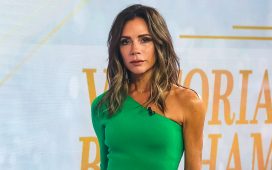Last weekend, more than 200 brands and 20,000 beauty fans flocked to the Los Angeles Convention Center for BeautyCon, an annual festival that gives celebrities and brands the chance to celebrate all things beauty with their fans. Among the brands touting the latest lipsticks and foundations were a number of those most covetable of companies: unicorns, a term coined by Silicon Valley for startups with a valuation of $1bn (£825m) or more.
It is a good time to be in the beauty game: the industry has shown double-digit growth in the last few years and investors are eager to capitalise. But with buzzy new brands popping up at a prolific rate, not all startups will develop a line that has the cool-girl hype of Huda Beauty or transform the beauty game like Glossier, which was valued at more than $1.2bn after its latest funding round earlier this year. So, what can new companies learn from some of the festival’s more established successes?

For Anastasia Soare of Anastasia Beverly Hills, who started her brand in 1997 with a focus on eyebrows, it is about identifying a gap in the market.
“When I started 20 years ago, people thought I was crazy. But there were no eyebrow products in the 90s so I started to develop a full product line and, in 2000, we launched in [the US department store chain] Nordstrom and the rest is history,” says Soare, whose empire is now worth approximately $3 billion. She now has a full brow bar inside Harrods that launched this summer, as well as a concession at Selfridges.
Huda Kattan, the Iraqi-American influencer turned founder and chief executive of Huda Beauty, valued at $1.2bn, also attended the LA festival. “Ultimately, I think we built a community, and that’s really the driving force behind the success of the brand” she says. Like Glossier, Huda Beauty has a strong following on various social platforms and engages its community in the decision-making process when creating products.
“Because our social family is so engaging, we are very skilled at identifying a gap in the market and creating products that serve a purpose,” says Kattan. “When we were developing the #FauxFilter Foundation, I reached out to our Instagram audience because I wanted to understand what kind of coverage and finish they wanted. We had thousands of responses that helped guide us, so our community really and truly helps with the creation of Huda Beauty products.”
Perhaps there are lessons to be learned from looking at what the most successful brands have in common. A decade ago, a female-led beauty unicorn would have been unheard of, but as the industry continues to grow they are becoming more common – prompting a scramble to find, incubate and invest in what could be the next big thing.
Many of the most successful beauty brands are putting a long overdue focus on inclusivity, and it is perhaps no coincidence that the US beauty landscape is currently being shaped by immigrants or the children of immigrants. The celebrity makeup artist Hung Vanngo, who left Vietnam for Canada as a child, hosted a panel discussion attended by passionate fans, while the festival’s chief executive, Moj Mahdara, is a first generation Iranian-American.
“We’re afforded the opportunity in this country, especially women, to do a lot that we probably could not do in our original homelands,” Mahdara says.












